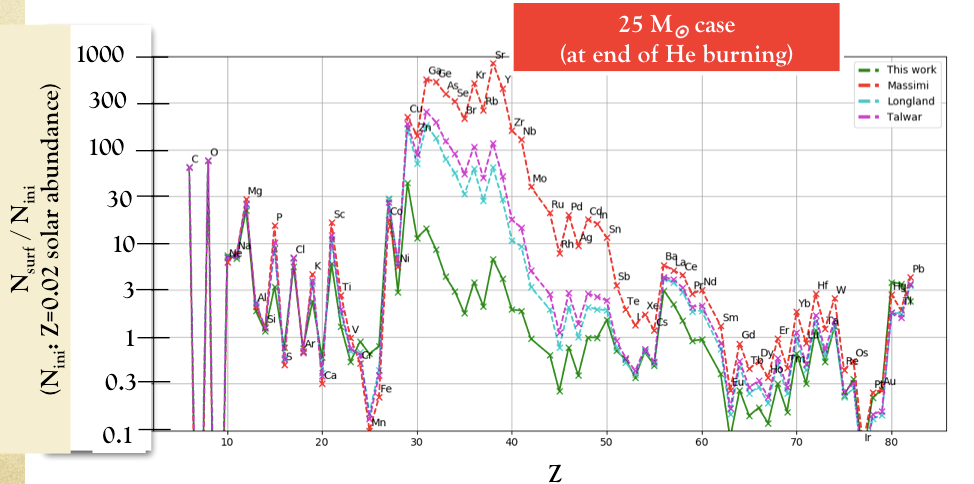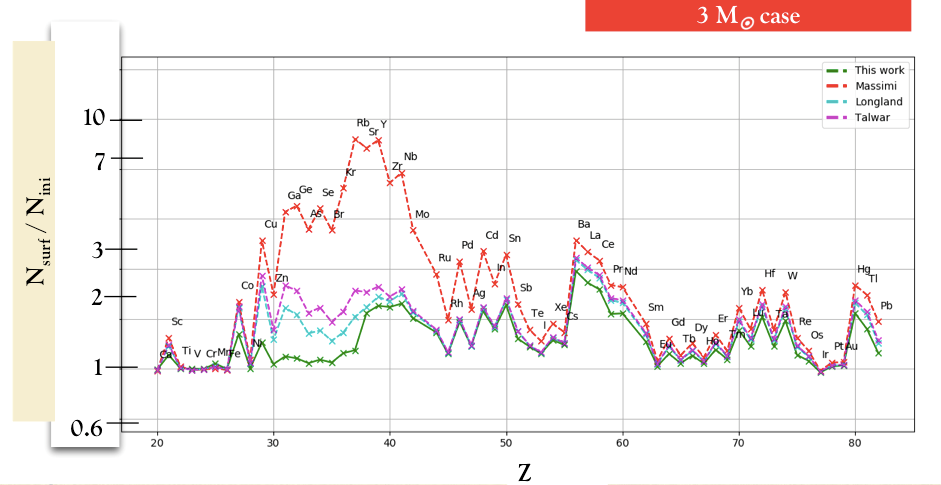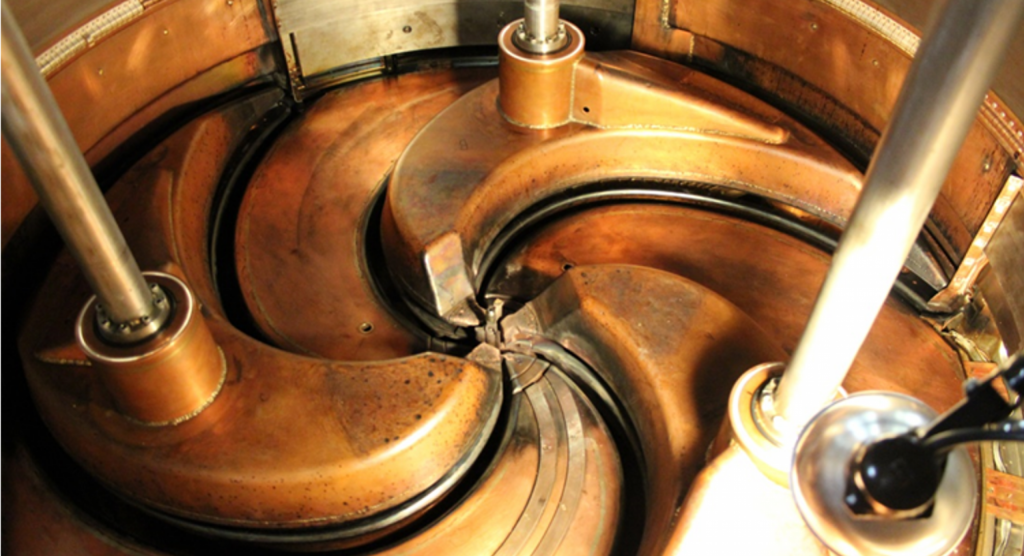Building a bridge and filling the gap between nuclear astrophysics and stellar astrophysics.


The Science
The principal research goal is building a bridge between nuclear astrophysics and astrophysics by learning computational methods to evaluate the impact of nuclear physics studied at the Cyclotron on stellar chemical abundances. The goals also include sharing the methods with graduate students and research staff in the Cyclotron for making their nuclear astrophysics results more fruitful.
The Impact
I started a collaboration with the research group NuGrid organized by computational stellar astrophysicists. Owing to computation tools provided by the group and through scientific discussions with them, I successfully learned to evaluate the astrophysical impact of our recent nuclear physics research conducted at the Cyclotron and discovered that the production of chemical elements in s-process stars are lower than conventional estimates by a factor of a few to 100 (depending on elements and type of stars).
Summary
Elements heavier than iron in the Galaxy are produced roughly 50% by the r-process with the other 50% being produced by s-process nucleosynthesis. The s-process occurs via a series of neutron capture [(n,γ)] reactions and b– decays in AGB stars and pre-supernova stars. A longstanding question is how neutrons are produced in these stars to cause (n,γ) reactions. A key nuclear reaction that has been considered is the 22Ne(α,n)25Mg reaction. The stellar reaction rate of 22Ne(α,n)25Mg is very difficult to estimate primarily because of the low cross sections. We recently determined the reaction rate using an indirect reaction method [S. Ota et al., PLB 802, 135256 (2020). doi:10.1016/j.physletb.2020.135256] and by collaborating with the NuGrid group, I could successfully determine the impact of our experimental results on chemical compositions in s-process stars. The calculated results are in the figures above and our new rates reduced the s-process abundance drastically. I am planning on further investigating the effects by comparing with observational data of these stars and abundances of presolar grains originated from the s-process stars. I will conduct the research at the laboratory of one of the NuGrid group’s PIs (in the U.K.) this year. Returning from the collaborative research, I am planning on sharing the methods with graduate students and research staff at the Texas A&M Cyclotron Institute.
Contact
For more information, please contact Dr. Shuya Ota at gnullro nullTnullOD liamEraenulllnullcuNnull TnullA nullatnullOnullanullyunullhSnull.

